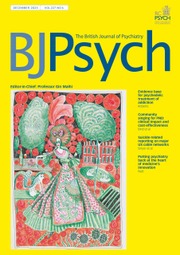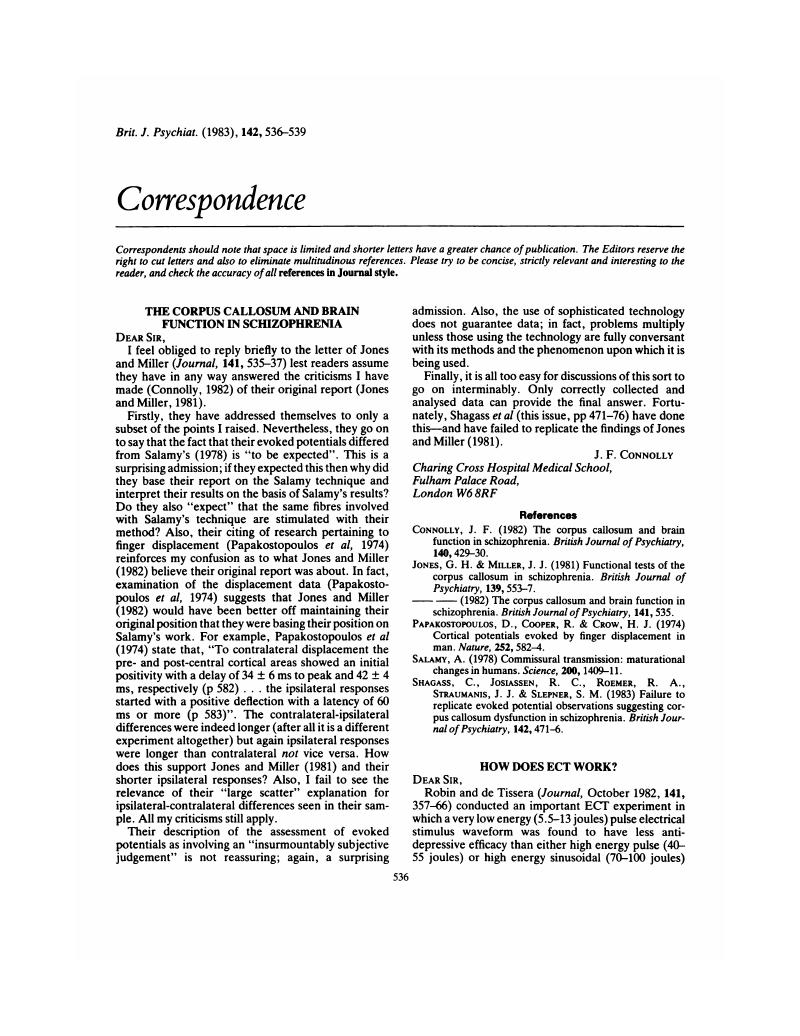Crossref Citations
This article has been cited by the following publications. This list is generated based on data provided by Crossref.
Cooper, J. E.
Andrews, H.
and
Barber, C.
1985.
Stable Abnormalities in the Lateralisation of early Cortical Somatosensory Evoked Potentials in Schizophrenic Patients.
British Journal of Psychiatry,
Vol. 146,
Issue. 6,
p.
585.
Catts, Stanley V.
Ward, Philip B.
Garvey, John R.
Fox, Allison M.
Michie, Patricia T.
and
McConaghy, Neil
1988.
Somatosensory Evoked Potential Activity: A Measure of Interhemispheric Transfer in Schizophrenia?.
International Journal of Neuroscience,
Vol. 38,
Issue. 1-2,
p.
131.



eLetters
No eLetters have been published for this article.